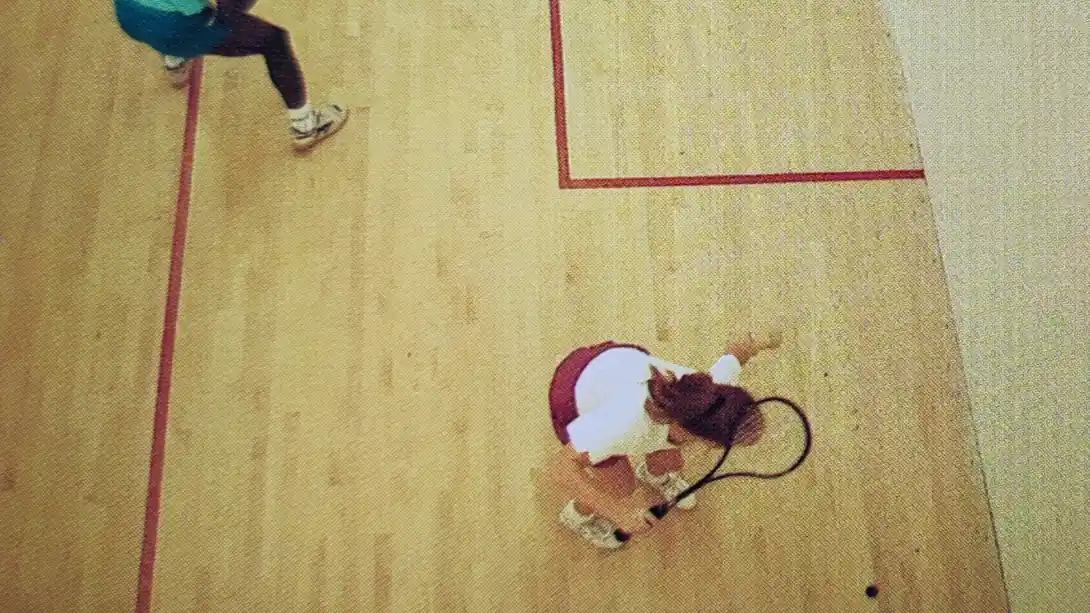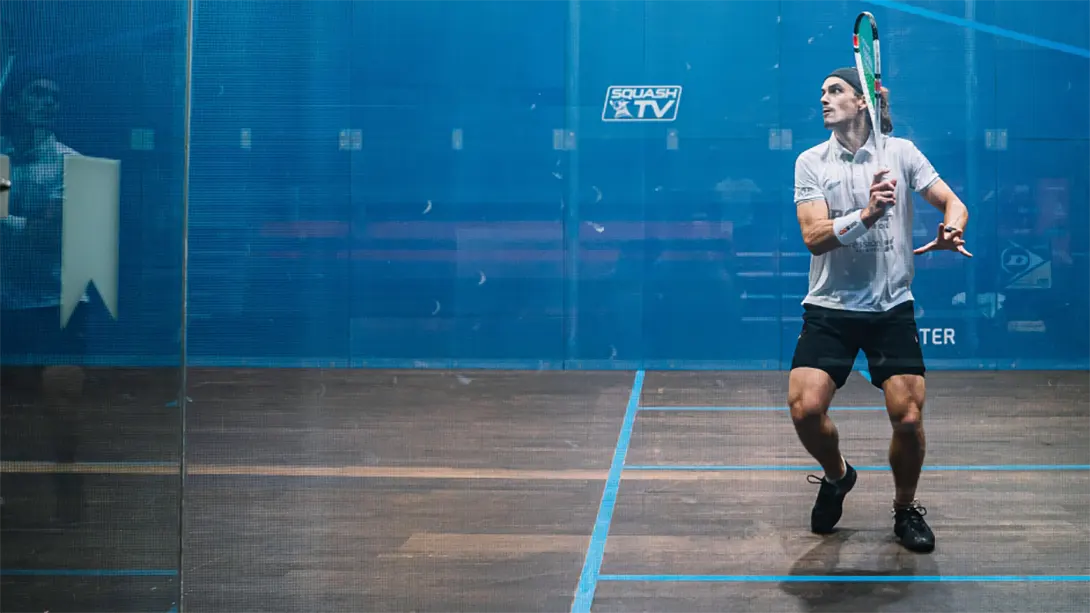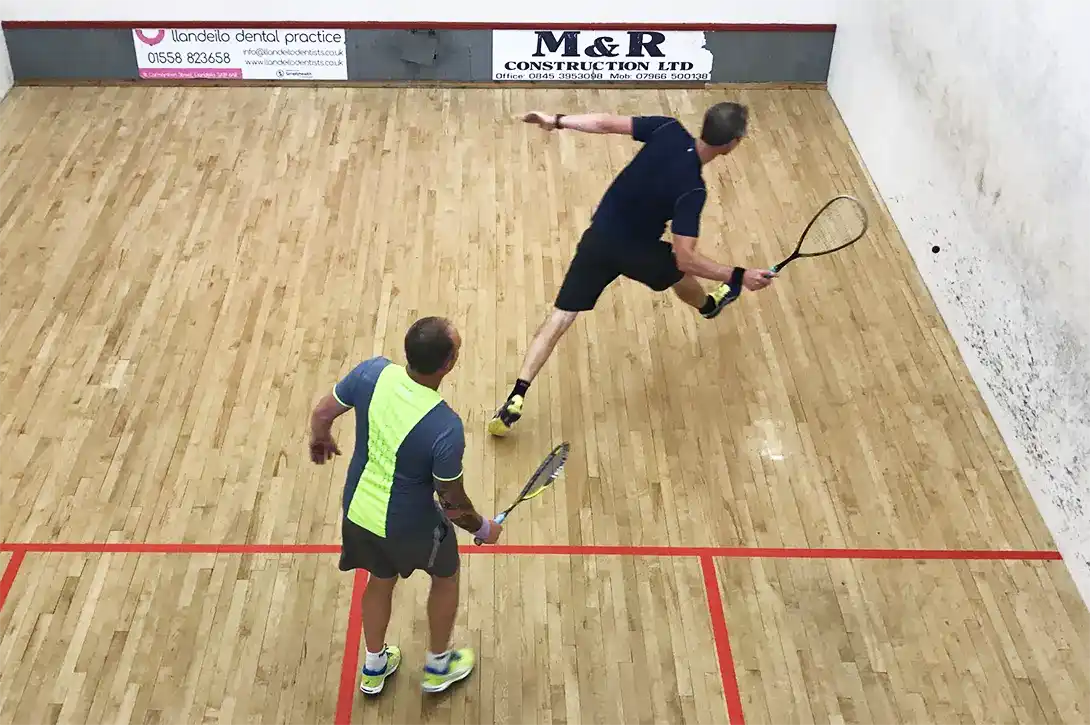13 November 2022 / 3-Min Read / Translate
I always recommend starting this pairs drill with a serve. In fact, I always recommend starting EVERY drill with a serve if possible. It builds good movement habits. Anyway, the objective of this drill is to focus on your straight shots, length variation and movement. You can only play the ball on one side of the court.

Notice the position and stance of each player
Depending on your skill level, start by using half the court. I know that sounds a lot, but I would prefer you to start too easy than too hard. If you find half the court too much, and you almost certainly will, make it the service box width. That means if the ball bounces outside the service box width, it’s out. Ideally, you would put some tape on the floor to use as a guide, but it’s not that important unless you or your training partners argue about whether the ball was “in” or “out”.
Safety is key, so even though you know which side your partner is going to hit the ball, remember to play safe shots. If you score this drill, there are not strokes, only lets. The same goes for swings; be careful if you are close to your partner. It’s the prefect opportunity to practice your Back Court Circling in a more open type drill.
I recommend using a ball lower than you usually do, so if you normally play with a double yellow, play with a single yellow and if you normally play with a single yellow, play with a red dot. Red dot balls are great for these drills.
Let’s look at some drill progressions. And don’t forget to play both sides of the court.
Start with a serve, but don’t score it. In fact, your objective is to keep the rally going for as long as possible. Not by hitting very easy or weak shots, but by not trying to win the point. Play a variety of length shots and speeds, but no hard kills or very soft short shots. Actually keep a score of your best rally in terms of number of hits. I challenge you to set goals of 10, 25, 50 and 100 shot rallies.
Player one stands at the back of the court and can only hit their shots short. Player two stands at the front of the court and can only hit deep. If you are at the back, your shot must have two bounces before the short line to count, so no hard and low shot that takes one bounce before the shot line and the other past it. This may seem like a counter-intuitive backward step, but this drill allows the player at the back to develop touch and the player at the front to develop better length.
Back to full length rallies for both players now. However, the server is not allowed to volley, except for their serve. This forces them to develop their skill in the back. Remember, you are allowed to hit the ball off the back wall, and in fact, it’s a great drill for improving it. The returner should be focusing on really getting the ball deep to make it hard for the server.

Only volleys can be played short. This focuses the mind on getting in front of your partner to move them around. It means that the other player has to hit their return deep, which is a perfect opportunity to practice their lob.
Any length by both players, so only the width rule applies. Play a variety of lengths and speeds, do you best to push your partner into the back corner and make them run to the front. Keep them guessing though but hitting some volleys deep and by varying the speed and height of your shots.
Hit and move! You don’t have time or space to stand and admire your shots. Get out of the way of your partner and try to get partly back to the T. Just because you know which side the ball is going to be hit to doesn’t mean you can just start there. If have done this with all levels of players (except complete beginners) and the higher the level, the more movement there is.
Don’t try to hit every short shot as a winner, that’s not what this game is useful for. Move your partner as much as possible, try to develop your short shots as “movers”, meaning you are looking to move your partner as much as possible.

There are other variations to this drill, for example, the server can boast once during each rally, which means they can control which side your both play on. Once the boast is played, you both must stay on that side. You can also use this concept with shots off the back wall, which really should be hit to the other side of the court anyway.
Always play safely. If in doubt, don’t hit the ball. Use this drill to develop patience and variety in your shots.